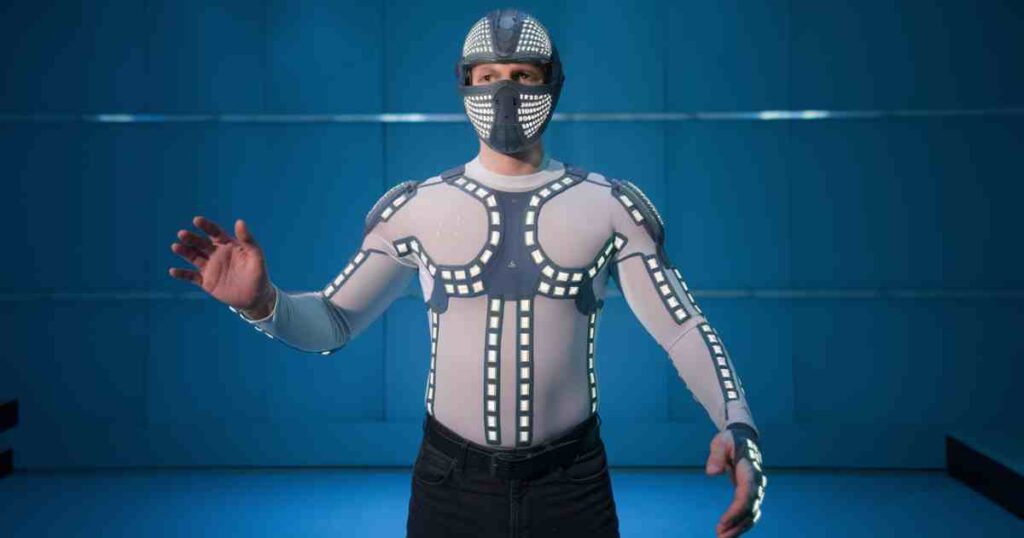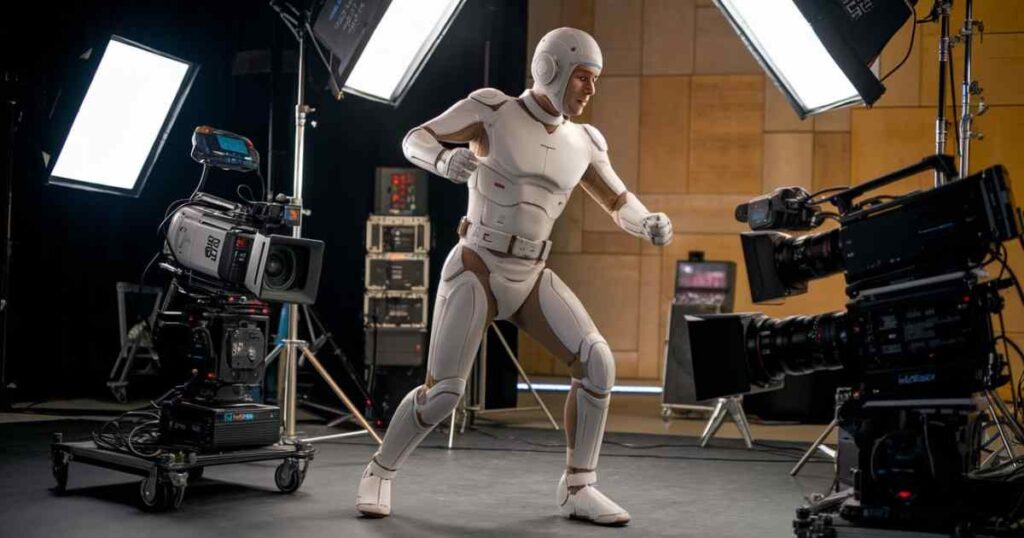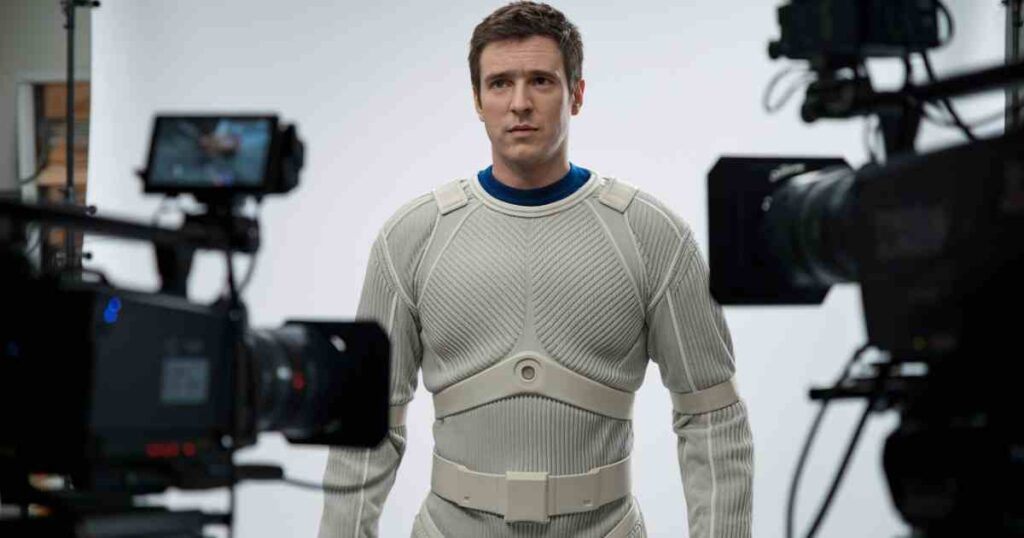Mocap suits are high-tech garments used in motion capture technology. These suits are covered in sensors or markers that track a person’s movements. They turn real-world motion into digital data, allowing for the creation of lifelike animations and virtual characters. The fascinating world of mocap suits and discover how they’re shaping our entertainment and more.
Imagine slipping on a suit that transforms you into any character you can dream up. With mocap suits, actors become aliens, fantastical creatures, or even animated versions of themselves. These incredible tools are revolutionizing how we create entertainment and much more.
Mocap suits aren’t just for Hollywood, though. They’re making waves in video games, healthcare, sports, and even virtual reality. From creating lifelike CGI characters to helping athletes improve their performance, these incredible suits are pushing the boundaries of what’s possible in the digital realm.
What is a Mocap Suit?

A mocap suit is like a second skin for actors and performers, covered in sensors that track their every move. These suits are the backbone of motion capture technology, allowing us to turn real human. Movements into data that can be used to animate 3D character animation. Think of it as a high-tech puppet system, where the actor’s movements control a digital character with incredible precision.
The history of mocap suits is a journey of innovation. Early systems used bulky equipment and took hours to process data. Today’s suits are sleek, comfortable, and can capture motion in real-time. This evolution has opened up new possibilities in film production technology, video game motion capture, and even fields like healthcare and sports analysis. The mocap suit has become an essential tool for creating realistic human motion in the digital world.
Read More: What is Canton Technology?
Types of Mocap Suits
There are two main types of mocap suits: optical and inertial. Optical systems use cameras to track markers on the suit, while inertial systems use sensors called Inertial Measurement Units (IMUs). Each type has its strengths and weaknesses, making them suitable for different applications in the world of digital animation and beyond.
Function and Applications
- Mocap suits serve one primary purpose: to capture human motion with incredible accuracy. This technology has found its way into numerous industries. In entertainment, it’s used to create lifelike CGI characters for movies and video games.
- In healthcare, it helps analyze patient movements for better treatment. Sports teams use it for performance analysis tools, while virtual reality training systems rely on mocap for immersive experiences.
How Mocap Suits Work: The Technology Behind Motion Capture
The magic of mocap suits lies in their ability to translate physical movements into digital data. This process involves complex systems of sensors, cameras, and powerful software. At its core, mocap technology aims to create a perfect digital replica of human motion, allowing animators and developers to bring characters to life with unprecedented realism.
Sensor-based tracking is the foundation of mocap technology. Whether it’s through optical markers or inertial sensors, these systems capture the position and movement of key points on the body. This data is then processed to create a digital skeleton, which serves as the framework for animating characters. The result is realistic human motion that can be applied to any digital character or analyzed for various purposes.
Sensor-Based Tracking
Optical motion capture systems use multiple cameras to track reflective markers on the suit. These markers are strategically placed on joints and other key points. Inertial systems, on the other hand, use IMUs to detect acceleration and rotation. Both systems provide real-time motion data, allowing for immediate feedback and adjustments during a performance.
Digital Skeleton and Data Processing
Once the raw motion data is captured, sophisticated software takes over. This software interprets the data from the sensors to create a digital skeleton. This skeleton is a simplified representation of the performer’s body, capturing the essential motion without unnecessary details. Animators can then use this skeleton as a base for their 3D character animation, adding details and refining the movement as needed.
Advanced Features and Applications
Modern mocap suits aren’t just about capturing body movement. Many systems now incorporate facial capture technology, allowing for nuanced expressions to be recorded alongside body motion. Some suits, like haptic feedback suits, even provide sensory feedback to the wearer. These advanced features are pushing the boundaries of immersive experiences in virtual reality training and entertainment.
Applications and Uses of Mocap Suits

The versatility of mocap suits has led to their adoption across various industries. In the world of entertainment, they’re an indispensable tool for creating lifelike CGI characters in movies and video games. Filmmakers use mocap to bring fantastical creatures to life, while game developers use it to create realistic player animations. The technology has revolutionized digital creature creation, allowing for performances that seamlessly blend human emotion with digital effects.
Beyond entertainment, mocap suits are making waves in healthcare and sports. Biomechanics research relies on mocap data to study human movement in incredible detail. This information is invaluable for developing new treatments and rehabilitation techniques. In sports, mocap suits serve as powerful performance analysis tools, helping athletes and coaches identify areas for improvement and prevent injuries.
Entertainment / Media
In the realm of entertainment, mocap suits have become the secret weapon for creating unforgettable characters. From Gollum in “The Lord of the Rings” to the Na’vi in “Avatar,” mocap technology has allowed actors to give performances that transcend the limitations of traditional special effects. Video game characters have also benefited, with mocap bringing a new level of realism to player movements and interactions.
Healthcare and Sports
Healthcare motion capture is transforming patient care and research. Doctors use mocap data to analyze gait patterns, track rehabilitation progress, and even plan surgeries. In sports, mocap suits provide athletes and coaches with detailed insights into performance. This data helps optimize training routines, improve techniques, and reduce the risk of injuries.
Virtual Reality and Training
Mocap suits are at the forefront of creating immersive experiences in virtual reality. They allow users to interact with virtual environments in natural, intuitive ways. This technology is particularly valuable in training simulations, where realistic movement is crucial. From military exercises to corporate training programs, mocap-powered VR is changing how we prepare for real-world challenges.
Read More: Sturnballs: Unraveling the Latest Innovation in Technology
Mocap Future in Gaming and Film: Deeper Realism and Immersion

The future of mocap technology in gaming and film is incredibly exciting. As suits become more advanced and data processing more sophisticated, we can expect even more realistic and nuanced performances. Virtual production techniques, which combine mocap with real-time rendering. This allows directors and designers to see final results instantly, streamlining the creative process.
AI algorithms can help refine motion data, fill in gaps, and even generate new animations based on existing performances. This could lead to more efficient production processes and even more lifelike characters. As these technologies continue to evolve, the line between real and digital performances will become increasingly blurred.
Emerging Technologies and Applications
Markerless motion capture is one of the most promising developments in mocap technology. This approach uses advanced computer vision and AI to track movement without the need for special suits or markers. While still in its early stages, markerless mocap could make motion capture more accessible and versatile. Another exciting area is the integration of brain-computer interfaces with mocap systems, potentially allowing for even more intuitive control of digital characters.
Industry Growth and Innovation
The mocap industry is experiencing rapid growth and innovation. Market projections suggest significant expansion in the coming years, driven by demand from entertainment, healthcare, and other sectors. Startups are pushing the boundaries of what’s possible with mocap, while established players continue to refine their technologies. As mocap becomes more affordable and user-friendly, we can expect to see its adoption in new and unexpected areas.
Frequently Asked Questions
What’s the difference between mocap suits and green screens?
Mocap suits capture movement data, while green screens are used for visual effects. Mocap focuses on performance, green screens on backgrounds.
How much do professional mocap suits cost?
Prices vary widely, from a few thousand dollars for basic systems to hundreds of thousands for high-end professional setups.
Can I use mocap technology at home?
There are consumer-grade mocap solutions available, though they may not match professional quality.
What skills are needed to work in mocap?
A mix of technical knowledge, understanding of movement, and often acting skills are valuable in mocap work.
How has mocap changed the acting profession?
Mocap has created new opportunities for actors to perform in digital roles, requiring a blend of traditional acting and technical skills.
Conclusion
In conclusion, the incredible technology behind mocap suits is transforming how we create and interact with digital content. From blockbuster movies to cutting-edge medical research, these high-tech garments are pushing the boundaries of what’s possible in animation, performance, and analysis. As the technology continues to evolve, we can look forward to even more immersive and realistic digital experiences. The future of mocap is bright, and it’s exciting to imagine what new wonders these suits will help create in the years to come.

